Plumbing distribution combs with faucets - features and
Parallel connection of sanitary devices using a special distribution manifold (sanitary comb) makes their operation more convenient. In addition, this method of wiring allows you to concentrate the connection of all devices in one place, but at the same time preserve their independence from each other.
Below we consider in detail what constitutes a sanitary comb and features of its use.

Distribution collector features
Device
Today, combs for water with taps are used not only for the cumulative connection of sanitary devices, but also for systems such as underfloor heating, as well as swimming pools, decorative fountains, etc. In addition, due to the excellent hydraulic performance of these devices, they are widely used in various industries .
Externally, the plumbing comb has the shape of a tube that contains one input and several leads, and as a result it resembles a comb. Hence its name. The principle of operation of the device is extremely simple - under the action of pressure, water penetrates into the wiring, from which it further spreads along the outlets.
Each tap is equipped with a locking mechanism, which can be of two types:
| Traditional tap comb | It has only two working positions, i.e. open / closed. |
| Distribution armature | Allows you not only to open and close the passage, but also to regulate the intensity of the flow. |
I must say that from a practical point of view, the second option is preferable. However, it should be borne in mind that the valves of the first type are more reliable.
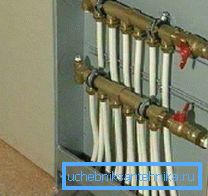
Note! Instructions for using the collector, involves an independent connection for hot and cold water. For ease of use, the devices are performed in red and blue.
Currently, there are three types of combs on sale - for 4, 3 and 2 branches. In those cases when you need to connect, for example, 5 devices, you should use two collectors for 3 and 2 gadgets, which are interconnected.
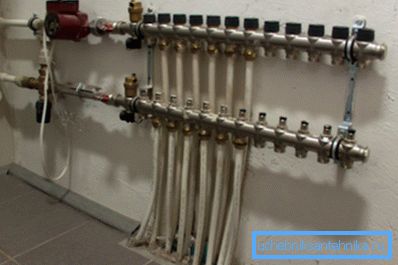
It should be noted that the design of such reservoirs was developed taking into account various nuances. In particular, they have mounting clamps that allow you to install them in a wardrobe or just on the wall. In addition, it is possible to connect central heating meters.
Varieties of collectors
For different cases it is assumed the use of different models of combs. For example, distributors for heating have a special hydraulic linkage, which greatly simplifies centralized control.
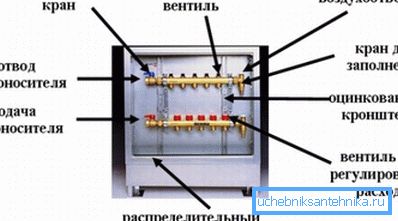
For heating systems, where a radiator system and a heated floor are used separately, collectors are used that allow not only to ensure uniform heating of the devices, but also to control and regulate some technical parameters.
In addition, the differences between the collectors are in the material from which the body is made.
Most often, wiring is done from:
- Cast iron;
- Bronze;
- Brass;
- Of stainless steel;
- Titan, etc.
The best solution is a bronze or brass collector, since the sediment practically does not settle on this material.
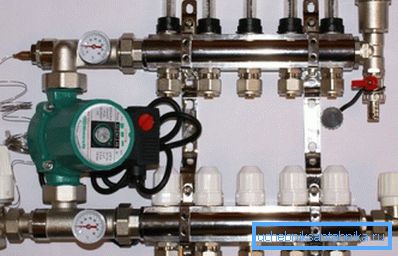
Merits
Compared with the three-way and sequential ways of connecting devices, a plumbing comb with taps has the following advantages:
- It stabilizes the pressure in the pipeline.
- When using it, there are no temperature gradients when several heating devices are operating at the same time, since all of them are connected in parallel.
- Provides the autonomy of each connection, so that when the need arises, you can block a specific branch with your own hands without disturbing the functioning of the rest of the system.
- Provides the ability to arrange a hidden pipeline.
- Differs in safety and ease of use.
- The ability to control and change the technical parameters of the connected systems, for example, at the floor heating wiring.
- Low price of the device.
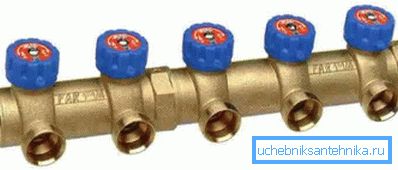
disadvantages
Among the disadvantages of using the system are:
- The high cost of connecting systems in this way, as it requires a greater number of pipes and fittings.
- When connecting a large number of devices requires the use of multiple devices.
- The bulkiness of the system, especially if multiple collectors are used.
Note! In order for the collector to function normally, experts recommend additionally using such devices as filters, barometers, counters, etc. If some of them may not be necessary, then filters and pressure reducers are necessary in any case.
Here, perhaps, are all the main points that you should know about comb-collectors in order to make a decision on their use when laying communications in housing.
Conclusion
Comb-type collectors are a great way to implement wiring for various plumbing fixtures. However, it should be borne in mind that such a connection entails additional costs.
From the video in this article you can get some additional information on the indicated subject.